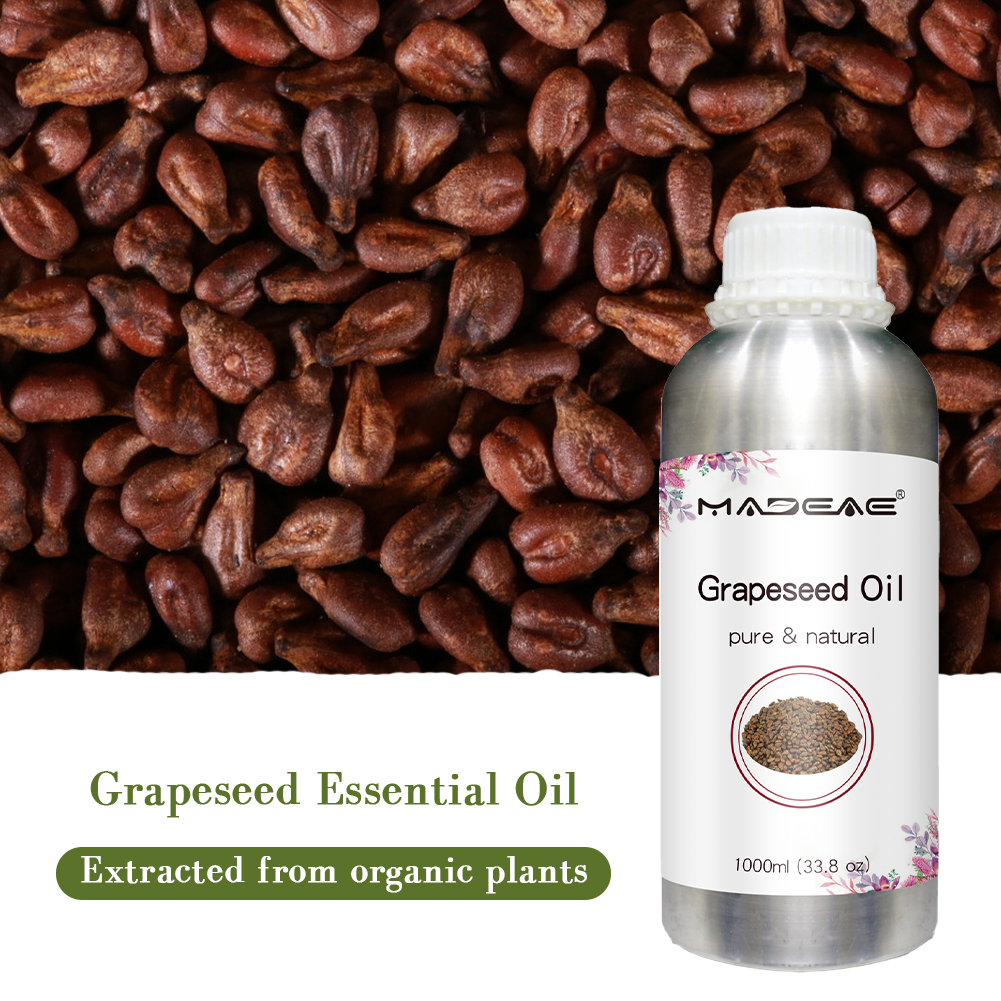Grapeseed oil is made by pressing grape (Vitis vinifera L.) seeds. What you might not know is that it’s usually a leftover byproduct of winemaking.
After wine is made, by pressing the juice from grapes and leaving the seeds behind, oils are extracted from the crushed seeds. It might seem odd that oil is held within a fruit, but in fact, a small amount of some type of fat is found inside just about every seed, even those of fruits and vegetables.
Because it’s created as a byproduct of winemaking, grapeseed oil is available in high yields and is usually expensive.
What is grapeseed oil used for? Not only can you cook with it, but you can also apply grapessed oil to your skin and hair due to its moisturizing effects.
Health Benefits
1. Very High in PUFA Omega-6s, Especially Linoleic Acids
Studies have found that the highest percentage of fatty acid in grapeseed oil is linoleic acid (LA), a type of essential fat — meaning we can’t make it on our own and must obtain it from food. LA is converted to gamma-linolenic acid (GLA) once we digest it, and GLA can have protective roles in the body.
There’s evidence demonstrating that GLA might be able to lower cholesterol levels and inflammation in some cases, especially when it’s converted to yet another molecule called DGLA. It might also help decrease the risk for developing dangerous blood clots due to its lowering effects on platelet aggregation.
One study published in the International Journal of Food Science and Nutrition even found that compared to other vegetable oils like sunflower oil, was more beneficial for lowering inflammation and insulin resistance in overweight or obese females.
One animal study also found that consumption of grapeseed oil helped improve antioxidant status and adipose fatty acid profiles (the types of fats stored in the body below the skin).
2. Good Source of Vitamin E
Grapeseed oil contains a good amount of vitamin E, which is an important antioxidant that most people could use more of. Compared to olive oil, it offers about double the vitamin E.
This is huge, because research indicates that vitamin E benefits include protecting cells from free radical damage, supporting immunity, eye health, skin health, as well as many other important bodily functions.
3. Zero Trans Fat and Non-hydrogenated
There might still be some debate as to which ratios of different fatty acids are best, but there is no debate about the dangers of trans fats and hydrogenated fats, which is why they should be avoided.
Trans fats are commonly found in ultra-processed foods, fast food, packaged snacks and fried foods. The evidence is so clear that they’re bad for our health that they’re even banned in some cases now, and many large food manufacturers are committing to moving away from using them for good.
4. Relatively High Smoke Point
The smoke point of an oil or cooking fat refers to its burning point or the temperature at which the fat begins to oxidize, changing its chemical structure in a negative way. Beneficial nutrients found in unrefined oils are destroyed when the oil is overheated — plus the taste can become unappealing
PUFAs are not usually the best choice for cooking because they’re known to oxidize easily, which causes them to become “toxic.” However, grapeseed oil has a moderately higher smoke point than olive oil and certain other PUFA oils.
With a smoke point of 421 degrees Fahrenheit, it’s appropriate for high-heat cooking, such as sauteing or baking, but deep frying is still recommended. For comparison sake, avocado oil has a smoke point of about 520 degrees, butter and coconut oil have smoke points of 350 degrees, and olive oil has one of about 410 degrees.
Post time: Nov-17-2023



